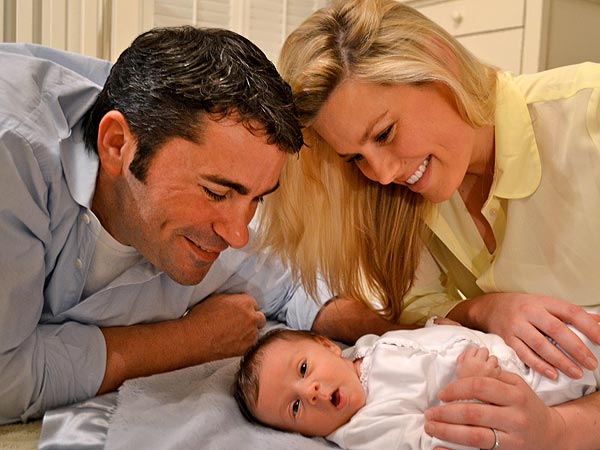LONDON – The title of the presiding judge 35 years ago was the same, chief magistrate of Pretoria, and the venue for the hearing, a converted synagogue, was not far from the modern courthouse seen on television screens around the world in recent days as Oscar Pistorius, the gold medal-winning Paralympic athlete, fought for bail in the killing of his girlfriend, Reeva Steenkamp.
The case that unfolded in the last weeks of 1977, like the one featuring Mr. Pistorius, centered on a death that captured global attention. Then, too, it was the role of the chief magistrate, a jurist of relatively minor standing in South Africa’s legal system, to weigh whether it was a case of murder or mishap. Then, too, there were constituencies, inside the courtroom and beyond, that clamored passionately for their version of the truth.
The similarities – and dissimilarities – will have pressed in on anyone who was present in the Pretoria courtroom those decades ago, when the proceeding involved was an inquest, and the death that of Steve Biko, a 30-year-old black activist who was a popular youth leader of the anti-apartheid movement. By the miserable manner of his dying, alone, naked, and comatose on the floor of a freezing prison cell, Mr. Biko became, in death still more than in life, a powerful force for an end to South Africa’s institutionalized system of racial repression.
A British television report from South Africa in 1977, eight days after Steve Biko, an anti-apartheid activist, was beaten to death in police custody.
The two cases, of course, will find widely different places on history’s ladder. Mr. Pistorius, awarded bail on Friday after a hearing that was sensational for what it revealed of his actions in shooting Ms. Steenkamp, and for the raw emotions the athlete displayed in the dock, became a global celebrity in recent years for his feats as the Blade Runner, a track star who overcame the disability of being born with no bones in his lower legs.
But for all that it has been a shock to the millions who have seen his running as a parable for triumph in adversity, Mr. Pistorius’s tragedy — and still more, Ms. Steenkamps’s — has been a personal one. Mr. Biko’s death was considered at the time, as it has been ever since, as a watershed in the history of apartheid, a grim milestone among many others along South Africa’s progress towards black majority rule, which many ranked as the most inspiriting event in the peacetime history of the 20th-century when it was finally achieved in 1994.
Still, for a reporter who covered the Biko inquest for the Times as the paper’s South Africa correspondent through the turbulent years of the 1970’s, there were strong resonances in the week’s televised proceedings in Pretoria. Among them was the sheer scale of the media coverage, and the display of how live-by-satellite broadcasting and the digitalization of the print press, with computers, cellphones and Twitter feeds, have globalized the news business.
Oscar Pistorius facing the media during his bail hearing this week in Pretoria.
For the Pistorius hearing, there was a frenzied, tented camp of television crews outside the court, a crush among reporters struggling to get into the hearing, and platoons of studio commentators eager to have their say.
The crush among reporters outside the bail hearing for Oscar Pistorius this week in Pretoria.
On each of the 13 days the Biko inquest was in session, I had no trouble finding myself a seat in the airy courtroom. I took my lunch quietly with members of the Biko family’s legal team, and loitered uneasily during adjournments in an outside passageway, eavesdropping on the policemen who were Mr. Biko’s captors in his final days as they fine-tuned the testimony they were to give in court.
In the Pistorius case, the police again emerged poorly, having, as it seemed, bungled aspects of the forensic investigation in ways that could complicate the prosecution’s case that Ms. Steenkamp’s death was a case of premeditated murder — and having assigned the case to an officer who turned out to be under investigation in a case of attempted murder himself. But nothing in that bungling could compare with the sheer wretchedness of the security police officers in the Biko case, who symbolized, in their brutal and callous treatment of a defenseless man, and in the jesting about it I heard in that courtroom passageway, just how far below human decency apartheid had descended.
There was, too, the extraordinary contrast in the deportment of the magistrates in their rulings in the two cases, and what that said about the different South Africas of then and now. Desmond Nair, presiding at the Pistorius hearing, took more than two hours to review the evidence in the killing of Ms. Steenkamp, swinging back and forth in a meandering — and often bewildering — fashion between the contending accounts of Ms. Steenkamp’s death offered by Mr. Pistorius’s legal counsel and those put forward by the police.
Marthinus J. Prins, the chief magistrate in the Biko inquest, took an abrupt three minutes to deliver his finding, a numbing, 120-word exculpation of the policemen and government doctors who ushered Mr. Biko to his death on the stone-flagged floor of the Pretoria Central Prison. “The court finds the available evidence does not prove the death was brought about by any act or omission involving any offense by any person,” Mr. Prins said, reading hurriedly from a prepared statement before leaving the courtroom and slipping away by a rear door.
In finding that nobody was to blame in the black leader’s death, the magistrate brushed aside testimony suggesting what the policemen and doctors involved acknowledged many years later to have been true, when they petitioned for amnesty under the Truth and Reconciliation Commission process that sought to heal the wounds of apartheid: that Mr. Biko had been beaten in police custody, suffering a severe brain injury that was left untreated until he died.
The utter lack of compassion, and of anything resembling justice, was expressed in the dull-eyed satisfaction of Mr. Prins when I caught up with him an hour or so after the verdict in his vast, dingy office a few blocks from the courtroom.
“To me, it was just another death,” he said, pulling off his spectacles and rubbing his eyes. “It was just a job, like any other.”
Mr. Prins, who rose to his position through the apartheid bureaucracy, without legal training, appeared at that moment, as he had throughout the inquest, to be disturbingly sincere, yet utterly blinded. Faithful servant of the apartheid system, he had given it the clean bill of health it demanded, and freed the police to continue treating black political detainees as they chose. Among the country’s rulers, the verdict was embraced as a triumphal vindication, while those who chose to see matters more clearly understood it to be a tolling of history’s bell.
Listening to Mr. Nair delivering his ruling in the Pistorius case, there will have been many, in South Africa and abroad, who will have found his monologue on Friday confusing, circular in its argument, and numbingly repetitive. As an exercise in jurisprudence, it was something less than a stellar advertisement for a South African legal system that, at its best, is a match for any in the world, as it was back in 1977.
Sydney Kentridge, lead counsel for the Biko family at the inquest, moved seamlessly to England in the years that followed, and became, by widespread reckoning among his peers, Britain’s most distinguished barrister, still practicing in London now, at 90.
In the 2011 Steve Biko Lecture at the University of Cape Town, Sydney Kentridge spoke about the inquest into his death in 1977.
A host of other South African expatriates who fled apartheid have made outstanding careers as lawyers and judges in Britain, the United States, and elsewhere in the English-speaking world, but many others stayed at home, and continue to serve a court system that has fared rather better, in recent years, than many other institutions in the new South African state.
But even if Mr. Nair, in granting Mr. Pistorius bail, seemed no match in the elegance of his argument for South Africa’s finest legal minds, he nonetheless did South Africa proud. In the chaotic manner of his ruling, which sounded at times like a man grabbing for law books off a shelf, he was, indisputably, doing something that Mr. Prins, all those years before, had not even attempted: looking for ways to steer his course to justice. People will disagree whether Mr. Pistorius deserved the break he got in walking free from that courtroom, but nobody could reasonably contest that what we saw in his case was the working of a legal system that strives for justice, and not to rubber-stamp the imperatives of the state.
This post was revised to make it clear that Sydney Kentridge, the lawyer who represented Steve Biko’s family in 1977 and practiced law well into his 80s, is now 90.











